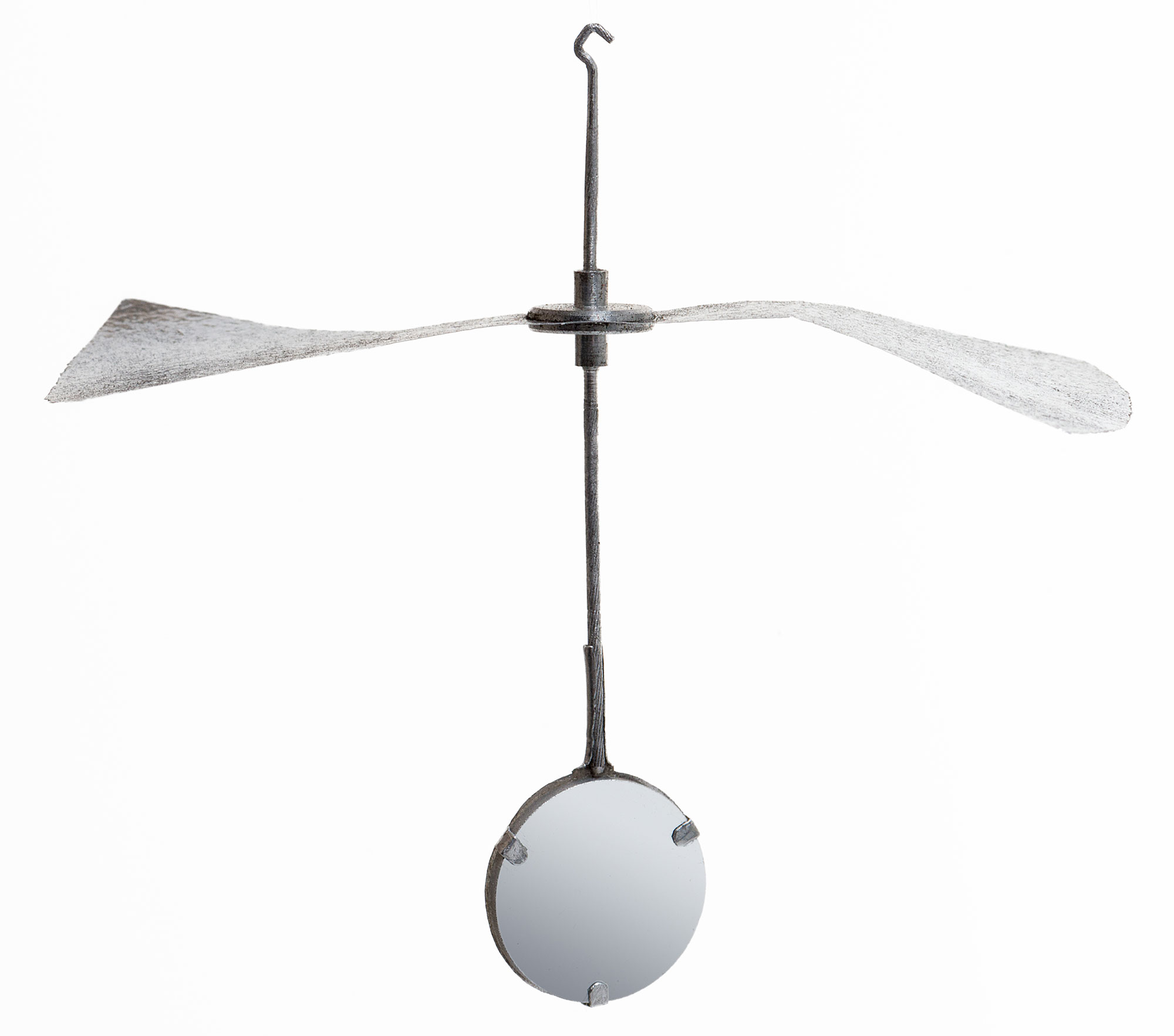
To measure the electricity generated by the passing of radioactive rays through the air, Marie and Pierre Curie used a quadrant electrometer. This type of electrometer was introduced by British physicist William Thomson, also known by the title of Lord Kelvin, in the second half of the 19th century. Like other scientists of his time, Pierre Curie designed variations of this instrument to better adapt it to the measurements he wanted to carry out.
Inside the Curie Museum’s quadrant electrometer is a long quartz fiber attached to a metal propeller-shaped component and a small mirror. The propeller is suspended between two circular metal plates, each of them separated into four quadrants similar to a wheel of cheese sliced into four parts.

The quadrants and propeller are connected to the terminals of an electrical generator and the earth to keep the propeller immersed in a constant electrical field. When the external electric charges, for example charges from an ionization chamber, are sent to the electrometer, the electrical field varies and this makes the propeller turn slightly.
To detect this small movement, the scientist uses the mirror attached to the propeller. A ray of light is projected onto the mirror, which reflects it onto a ruler. When the propeller turns, the mirror turns along with it, and the point of light moves over the ruler. By measuring this movement, the scientist can determine with a high degree of accuracy how much electrical charge is being sent to the electrometer.

















